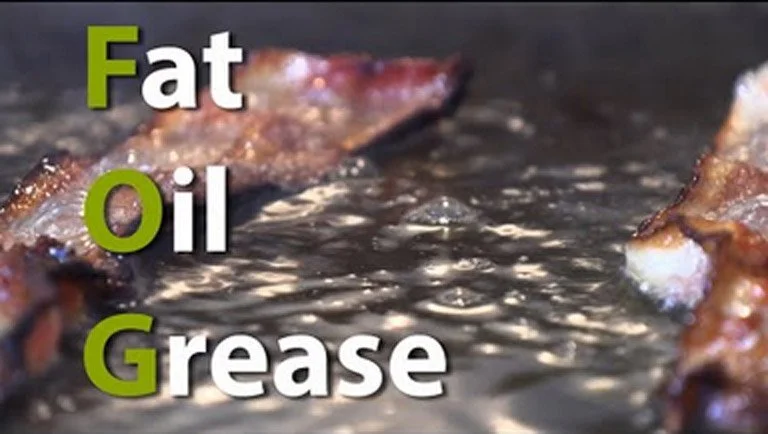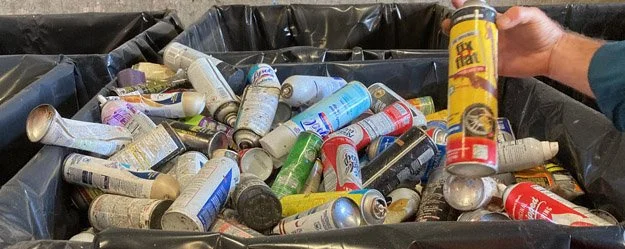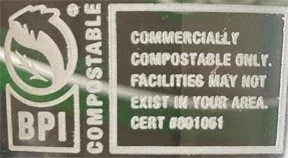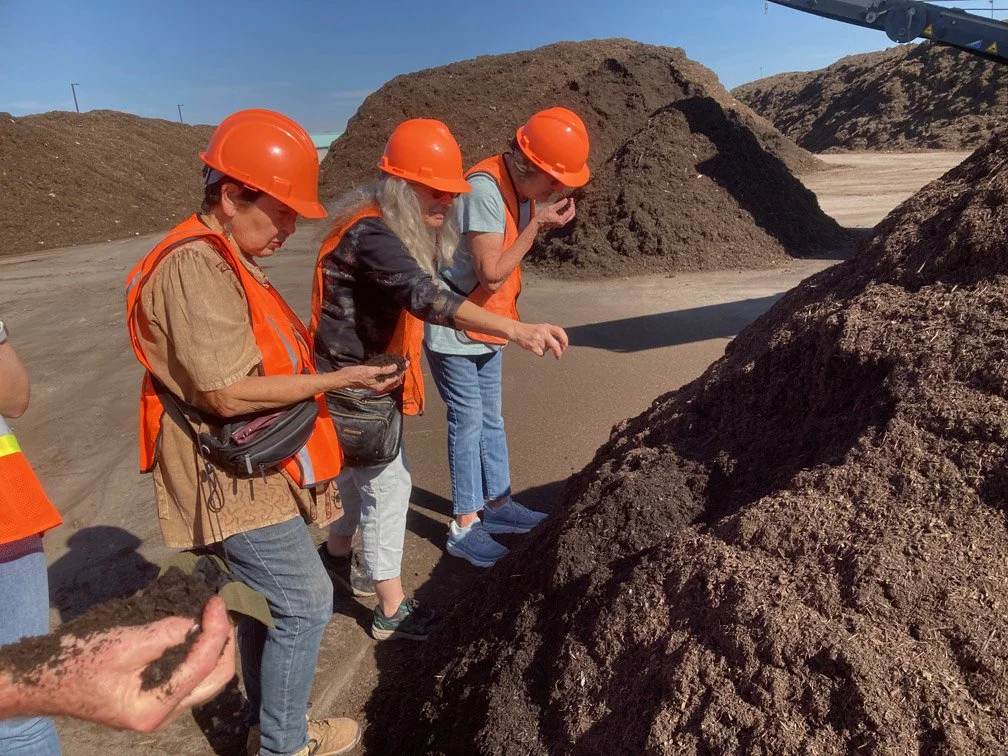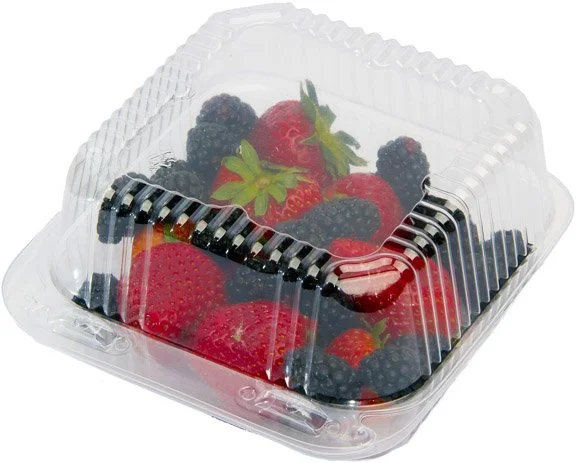Mission Earth Trash Tips
If you live in Placer County, these tips are for you! They are the outcome of knowledge acquired during a tour of the Materials Recovery Facility in Lincoln that serves our area of Placer County.
Quick links to the tips:
FOG (cooking fats, oil, and grease)
Bottle Caps - On or Off?
For more go to: Do You Wonder What Happens to Your Trash? We Did!
F.O.G.
Did you know that cooking fat, oil, and grease (otherwise known as FOG) is considered to be a household waste and should NOT be tossed in the trash. Why? Well, because it contaminates items in the trash stream that otherwise could have been recycled!
So, what should you do with it? The Western Placer Waste Management Authority (WPWMA) offers two options: Free drop off (as for any other household waste) OR, free pick up (for only some locations):
If you live in unincorporated Placer County, you can drop off your FOG for free at either the Auburn Transfer Station (on Shale Ridge Rd) or at the Waste Facility in Lincoln (on Athens Ave). When you bring in your FOG, make sure that it is in a secure container with a screw on lid, and clearly marked FOG. Barb has been reusing old parmesan cheese containers and old glass jars for this purpose.
If you live in one of the cities within Placer County, it is likely that you qualify for free FOG pick-up. Contact your local transfer station or the WPWMA to see if you qualify. As with the free drop off, make sure that the FOG is clearly labeled and secured in a container with a lid.
Aerosol Cans
‘Tis the season for whipped cream toppings for pie and hot chocolate. BUT, please think twice before purchasing whipped cream in an aerosol can! Did you know that the Materials Recovery Facity (MRF) must treat aerosol cans as household hazardous waste. Thus, aerosol cans should NOT be thrown in your trash can. This includes seemingly innocuous products like whipped cream and cooking spray along with the more obvious products such as spray paints, pesticides, and cleansers. Even if an aerosol can appears to be empty, it still has to be separated for safety purposes. What makes aerosol cans unsafe? The answer to that is threefold:
aerosol cans are pressurized, and, thus, may explode when crushed during the sorting or baling process at the MRF (Materials Recovery Facility)
some propellants are ignitable or toxic. Most aerosol cans use hydrocarbons, such as propane, butane, or LPG gas as the propellant, which are ignitable
the product itself may be ignitable, corrosive, or toxic.
If you were wondering, whipped cream uses nitrous oxide as a propellant (thus, if not emptied, the can could explode if crushed) and cooking spray commonly uses butane, isobutane, and propane (explosive, ignitable).
Aerosol Cans collected off the conveyor belts at the MRF
Aerosol cans thrown into our trash cans end up on the MRF's conveyor belts where sorters must remove them before they reach the balers where the safety issues arise. The collected cans are ultimately sent off property to a company that specializes in removing the propellants. The cost to the MRF for this service is approximately $0.50 per can. Proper disposal of aerosols is expensive, but the potential threats to the environment, the MRF, and the workers at the MRF are greater.
SO, what should you do? Unlike for F.O.G. (the subject of last month’s tip), there is no free curbside pickup for aerosol cans. Drop off is free, is limited to the waste facility where the MRF is located at the corner of Fiddyment Rd and Athens Ave in Lincoln (3195 Athens Avenue). Plan to set aside your aerosol cans along with your other household hazardous waste so that you can drop everything off at once – consider building community by carpooling with a friend or neighbor! Click here for a handy pdf of what is considered household hazardous waste, and where you can drop each type off.
FINALLY, back to the pie and the hot chocolate. You can avoid that particular aerosol hassle by making your own whipped cream. It is surprisingly easy:
Put 1/3 cup whipping cream, 1 tsp sugar, and 1/4 vanilla in a mixing bowl.
Mix at medium low speed with a handheld mixer for about 1 minute until foamy (my grandmother did this by hand)
Increase speed to high and mix for about 1 to 3 minutes until soft peaks form.
Presto! And, if you don’t finish it off, it will keep if tightly covered.
Caps On or Off??
The answer to that is: ON! Leaving the caps on our discarded plastic bottles prevents them from slipping through screens and ending up with the glass or in waste bound for the landfill. But “wait,” you say, “the bottles and caps are made of different plastic!” It turns out that when the plastic bottles with their caps are shredded during reprocessing, the different plastics are easily separated through flotation (the shredded caps float whereas the shredded bottle pieces sink). So, put the cap back on before tossing in the trash!
Repurposing Plastic from Bottles
The best practice is, of course, NOT to use plastic bottles in the first place! But, if it can’t be avoided, then here is the lowdown on repurposing those bottles:
The #1 plastic that most beverage bottles are made of can be recycled into new beverage containers, or downcycled into textiles, fleece, jackets, carpets, stuffing, storage containers, boat sails, shoes, and autoparts.
The #2 plastics that most milk jugs are made of can be downcycled into plastic crates, lumber, decking, fencing, furniture, piping, floor tiles, buckets, crates, flowerpots, garden edging, gins, and children’s toys.
Click here to learn more about repurposing bottle caps.
Interested in learning more about how Placer County handles its trash? Go here: https://www.ppoft.org/mrf-information
Is Compostable Plastic the Answer?
Label on a compostable plastic cup
Many of us have tried replacing our single use plastics with compostables, when really the best answer is to use neither. If you read the labels of compostable products carefully, you will see that they must be commercially composted. If, like me, you have ever tried to put something labeled ‘compostable’ in your backyard compost, you know that it doesn’t break down as expected. Commercial composting requires higher temperatures and specific microbial conditions not available in a backyard compost pile or at our Materials Recovery Facilty (MRF). It turns out that there are less than 200 facilities in the United states set up for industrial composting! For us, the closest commercial composting facility that handles certified compostables is in Napa.
Can Compostable Plastic be Recycled?
Unfortunately not! According to the EPA, “Compostable plastics are not intended for recycling and can contaminate and disrupt the recycling stream if intermixed with petroleum-based plastics that are non-compostable.”
What Happens to Compostable Products at the MRF?
Although composting does take place at the MRF, currently it does not have the equipment to ensure the proper conditions (especially the necessary high heat) for true commercial composting. Thus, any compostable plastic that comes to the MRF goes straight to the landfill, where it takes up space and gives off methane as it very slowly biodegrades. The reason it emits methane (a greenhouse gas, about 30 times more potent than carbon dioxide) is because once buried in a landfill, there is no oxygen available, so methane (CH4) is produced when it breaks down rather than carbon dioxide (CO2).
The final compost product at the MRF
Composting at the MRF
Although not an industrial composter, the MRF has set aside a sizeable area for composting windrows: some consist of mulched green waste (grass clippings, leaves, tree residue) and others are created by mixing organics (food scraps) with mulched green waste. After about 8 weeks, the windrows are sieved and the resultant organic-rich soil is sold as OMRI-certified compost to the public. Because it is OMRI-certified (and thus, more marketable), no compostable plastic is allowed in the compost created at the MRF.
The Upshot
For Placer County Residents, using compostable plastic products is not better for the environment because they ultimately end up in our landfill because they can neither be recycled nor composted at our MRF. The best solution is to avoid single-use products altogether!
Interested in learning more about how Placer County handles its trash? Go here: https://www.ppoft.org/mrf-information
Think Twice Before Buying Produce in a Clamshell!
Most of the California Redemption Value (CRV) plastic beverage containers are #1 plastics, and are recyclable. Unfortunately, there is no market for the #1 plastic clamshell containers commonly used for products such as strawberries, blueberries, leafy greens, and goods from the bakery or deli. I know it is hard to resist, but please think twice before buying produce packaged in these single use clam shells. Instead, why not ask your grocer to consider getting them packaged in cardboard, or better yet buy local and in season!


